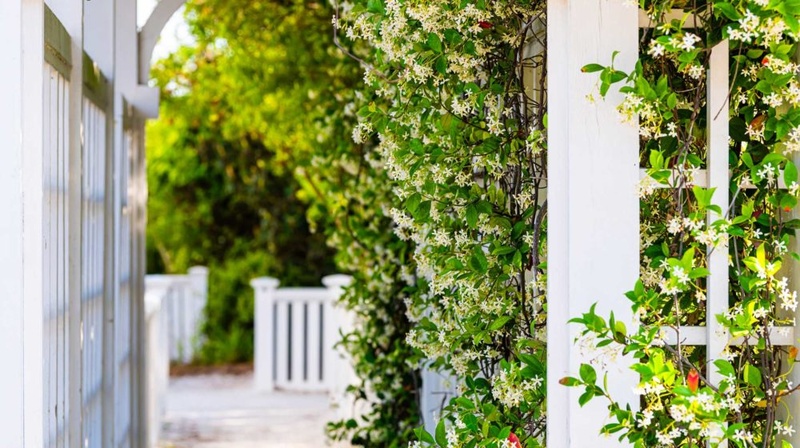
Elevate Your Garden with Vines
Vines can transform your garden into an enchanting oasis. In this blog, we’ll delve into the various functions of vines, guide you in choosing manageable and suitable species for your Florida garden, and provide insightful steps on training your chosen vine.
Vines are Mother Nature’s decorators, adding an aesthetic charm that few other plants can compete with. They not only grace gardens with fascinating colors and textures, but also provide practical benefits that make them plant favorites among Florida homeowners. With their unique capacity to climb, crawl, and cascade, vines can transform gardens and outdoor spaces, making them dreamy green oases.
Purposes of Vines
Beyond their striking beauty, vines can serve multiple purposes in a garden. Their ability to provide shade and coolness can bring comfort and relief to outdoor spaces during hot Florida summers. Vines can also be used as privacy screens, providing a natural barrier between a garden and the outside world. Plus, they are excellent at covering unsightly elements like old fences or outbuildings, and many vine species can attract pollinators like butterflies and hummingbirds.
Choose Manageable Vines
While vines can bring charm to a garden, some species can prove a bit challenging to handle. Select species known for their manageable growth, such as Star Jasmine or the Florida-friendly Confederate Jasmine. These vines offer beautiful and fragrant blooms without overtaking a garden.
Homeowners should avoid aggressive growers like English Ivy and Japanese Honeysuckle, as these can become invasive and may even damage structures. The latter is particularly harmful to Florida’s local ecosystems.
Selecting the Best Type and Species
Selecting the right type and species of vine depends on your particular gardening needs and the conditions of your outdoor space. Consider the amount of sunlight your garden gets, the soil type, and the purpose the vine will serve.
Climbing roses are perfect for sunny locations, while vines like Coral Honeysuckle do well in both sun and partial shade. For dry soils, consider a resilient vine like the Carolina Jessamine. The Passion Flower vine, which serves as a host plant for several butterfly species, is an excellent choice to attract wildlife.
How to Train a Vine
Training a vine can make a significant difference in how it enhances your garden. The training process directs the vine’s growth and helps manage its spread.
Training a vine can be achieved in five simple steps:
- Select a Support Structure: Choose a trellis, arbor, pergola, fence, or wall where your vine can grow.
- Plant the Vine: Install the young vine in soil that has been enriched or lightly amended. Water it thoroughly.
- Guide the Vine: Gently tie the young vine shoots to the structure, taking care to not damage the stems.
- Regular Pruning: Prune regularly to maintain your desired shape and size and to promote healthy growth. Some vines, like wisteria, may require more extensive pruning, while others, like jasmine, need minimal intervention.
- Monitor Growth: Keep an eye on the vine as it grows, guiding new shoots along the structure and removing any stray tendrils.
Elevating your garden with vines is a worthwhile adventure, opening up possibilities for beauty, shade, and even wildlife support. By selecting suitable species, providing proper support, and maintaining routine care, Florida homeowners can transform their outdoor spaces into picturesque retreats with the versatile, ever-enchanting vine.